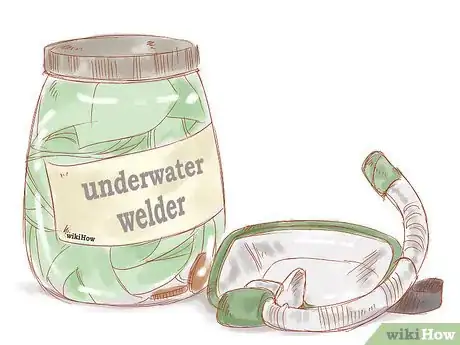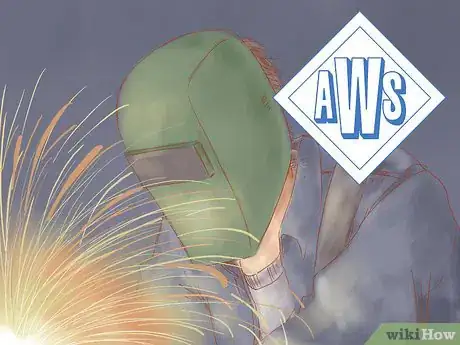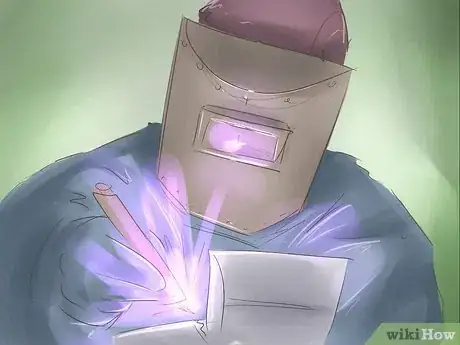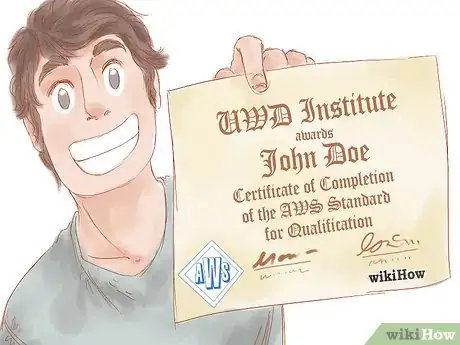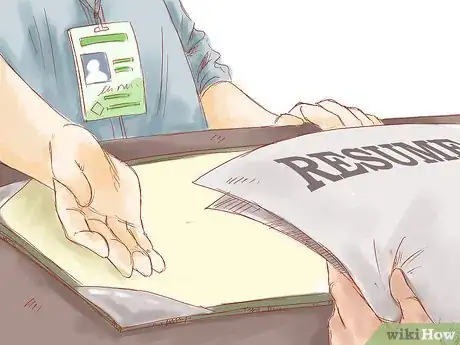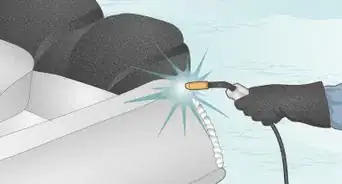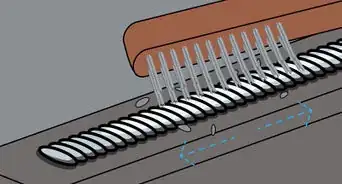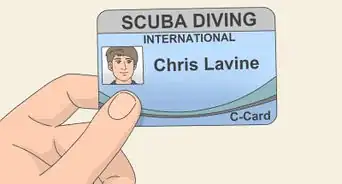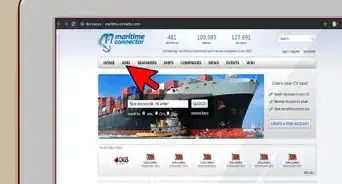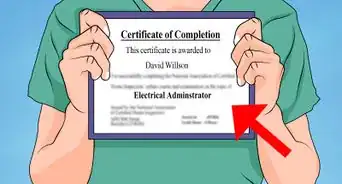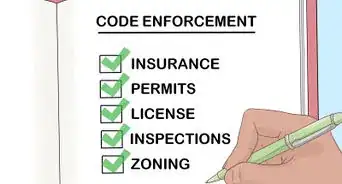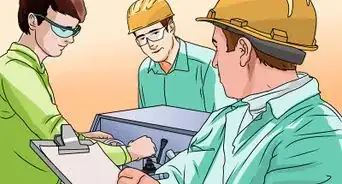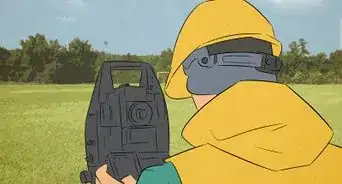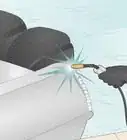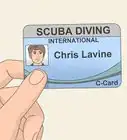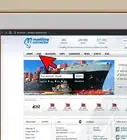This article was co-authored by wikiHow Staff. Our trained team of editors and researchers validate articles for accuracy and comprehensiveness. wikiHow's Content Management Team carefully monitors the work from our editorial staff to ensure that each article is backed by trusted research and meets our high quality standards.
There are 13 references cited in this article, which can be found at the bottom of the page.
This article has been viewed 247,771 times.
Learn more...
Choosing a career as an underwater welder can provide you with an opportunity to apply sought-after skills in a unique and exciting environment. If you're interested in becoming an underwater welder, you'll first need to possess a standard certification as a welder. After that, you can go on to obtain your commercial diver's license before completing your specialized certification training at a reputable underwater welding school.
Steps
Completing Your Welding Certification
-
1Be prepared to spend a considerable amount of money. Tuition and certification fees often differ by institution. That being said, collecting the various professional credentials needed to lock down high-paying positions will typically cost a few thousand dollars minimum.[1]
- A state-funded technical school, such as Santa Barbara City College or South Central Louisiana Technical College, may be the least expensive option for many people.[2]
- You may need to begin saving up some money if you don't have the means to pay for your education and certifications at present.
-
2Receive your high school diploma or GED. The first step along the path to becoming an underwater welder is to complete your base level of education. Most employers will expect to see at least a high school diploma, but you can also get your GED if you're returning to school after an absence.[3]
- Having a college degree is not necessary to work as an underwater welder, but it could help you stand out from other professionals once it comes time to start looking for a job.
- After taking care of your education requirements, securing employment will largely be a matter of racking up the relevant credentials and experience.[4]
Advertisement -
3Get certified as a topside welder. Seek formal training in one of several individualized welding processes through an accredited welding school. If you live in the U.S., you also have the option of completing the Certified Welder program offered by the American Welding Society (AWS). You'll be awarded your certification after passing both a written and hands-on practical exam.[5]
- Run a quick search online to find welding schools or training programs in your area.
- It may take 7-24 months to complete your welding training and certification, depending on the school or program you choose.
-
4Gain a few years of experience working as a topside welder. While it's technically possible to get a job as an underwater welder right out of the gate, having 2 or more years of direct experience will greatly improve your chances. This will prove to employers that you're proficient in welding techniques and safety procedures on dry land, and are ready to apply them in an aquatic setting.[6]
- The more surface welding experience you have under your belt, the more likely you are to be considered for underwater jobs in the future.
Receiving the Necessary Dive Training
-
1Take and pass a preliminary dive physical. In most cases, you can sign up for a physical with the same institution offering the commercial diver certification you're seeking. Along with a head-to-toe examination, you'll also be tested on your swimming abilities and cardiovascular conditioning.[7]
- Having drugs, alcohol, or an infectious illness in your system can be enough to temporarily disqualify you from receiving a commercial diver certification. In this case, you'll need to retake the physical once you're clear of the offending substance.
- If you exhibit symptoms of asthma, claustrophobia, severe motion sickness, collapsed lung, cardiac arrhythmia, or congestive heart failure, you may be denied certification permanently.[8]
- It's recommended that you submit to a dive physical before going any further, even if the dive school you plan on attending doesn't require one. You may discover that you have some type of limitation that won't allow you to pursue a career as an underwater welder.
-
2Become a certified commercial diver. Enroll in a commercial diving academy in your state or territory and work your way through their training program. The duration of these programs vary, but most are set up to be finished in 5-6 months, or around 900 training hours. Upon completing the program, you'll be receive a valid and industry-recognized commercial diver certification.[9]
- A few of the more notable commercial diving academies include the American National Standards Institute Association of Commercial Diving Educator (ANSI/ACDE), the Association of Diving Contractors International (ADCI), and Diver's Academy International.
- Some commercial diving academies make it mandatory for applicants to pass a written entrance exam and a dive physical before they're accepted into a specific program.
-
3Attend an underwater welding school. This is where you'll bring your 2 newly-acquired skills, welding and commercial diving, together. The course content and length of underwater welding programs can vary greatly, but most consist of both traditional study and hands-on training in wet welding skills, and may range from 6 months to 2 years.
- In addition to classroom curriculum, most programs will require you to clock a certain number of dive hours (usually 20-50) in order to be approved for certification.[10]
- Underwater welding schools tend to be located in cities bordering major bodies of water that have thriving fishing, transportation, and drilling industries.[11]
-
4Apply for a dive tender position to continue your training on the job. Most underwater welders don't start off in high-profile positions. Instead, they begin as “dive tenders,” apprentices that provide assistance to experienced professionals during dives. Submit your resume, complete with your new credentials, to the company of your choice to add your name to the fold of potential hires.[12]
- Coastal construction companies, engineering firms, shipbuilders, and underwater salvage teams are just a few of the contractors that work with underwater welders.[13]
- Research the policies and procedures unique to the underwater welding firm you want to work for and train to these specifications. This will enable you to perform at your peak level as a dive tender.
-
5Continue improving your skills to advance in your field. The tools you'll need to excel as an underwater welder will depend on the company employing you, the nature of the work they do, and the specific industry regulations in place in your area. Some of the most important skills to possess include cutting, rigging, and fitting metal components, drafting design plans and standards, and testing and inspecting finished projects.[14]
- Some wet-welders also train extensively in underwater videography and still photography to document the progress of important projects.
- Qualifications for underwater welders can vary not only from company to company, but from one project to the next.[15]
Community Q&A
-
QuestionHow do I get paid to train as an underwater welder?
 Community AnswerYou could probably search online to find paid training in your area.
Community AnswerYou could probably search online to find paid training in your area. -
QuestionWhat qualifications do I need?
 Community AnswerYou would need to have your welders qualification and your commercial diving qualification. (It needs to be a commercial diving certification because a regular sports diving training license would not give you the safety training you would need for offshore work.)
Community AnswerYou would need to have your welders qualification and your commercial diving qualification. (It needs to be a commercial diving certification because a regular sports diving training license would not give you the safety training you would need for offshore work.) -
QuestionIs there an age requirement to become an underwater welder?
 Community AnswerThe typical age requirement is from 18 to 35.
Community AnswerThe typical age requirement is from 18 to 35.
Warnings
- While working as an underwater welder can be an exciting and rewarding experience, there are many dangers associated with the occupation, including decompression sickness, drowning, and electrocution.⧼thumbs_response⧽
References
- ↑ https://www.commercialdivingacademy.com/underwater-welder.cms
- ↑ https://waterwelders.com/underwater-welding-schools-us/
- ↑ https://www.commercialdivingacademy.com/underwater-welder.cms
- ↑ https://waterwelders.com/smoothest-path-to-an-underwater-welding-career/
- ↑ https://www.weldingschool.com/blog/how-to/welding-school-guide-how-to-become-a-certified-welder/
- ↑ https://waterwelders.com/smoothest-path-to-an-underwater-welding-career/
- ↑ https://waterwelders.com/dive-physical-fitness-requirements/
- ↑ https://www.diversinstitute.edu/admissions/requirements/disqualifying-medical-conditions/
- ↑ https://www.diversacademy.edu/commercial-diving-school-guide/
- ↑ https://www.diversacademy.edu/courses-curriculum/
- ↑ https://waterwelders.com/best-underwater-welding-schools/
- ↑ https://waterwelders.com/dive-tender-responsibilities/
- ↑ https://waterwelders.com/top-10-commercial-diving-employers-5-is-a-behemoth-in-underwater-welding/
- ↑ https://app.aws.org/education/Plunge.pdf
- ↑ https://waterwelders.com/smoothest-path-to-an-underwater-welding-career/
- ↑ https://bizfluent.com/info-8621771-much-underwater-welders-make-year.html
About This Article
To become an underwater welder, start by getting certified as a topside welder through an accredited welding school and work for a few years welding topside to gain experience. Next, enroll in a commercial diving academy and become a certified commercial diver. Then, attend an underwater welding school to combine your welding and diving skills. Once you complete your underwater welding training, start looking for open positions! To learn more about passing the required diving physical, read on!
